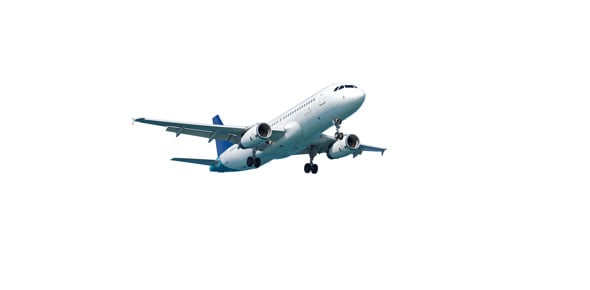14. (204) What type of seal is found between the disc and valve body...
37. (215) Approximately how much air space is left at the top of the...
33. (214) Which would most likely be used to control the automatic...
34. (214) Refueling by using the fuel-level control valves is a much...
10. (204) The arrow stamped on the body of a check valve indicates the
15. (205) The best method for troubleshooting a fighter engine feed...
17. (206) On a tanker aircraft, where must fuel be routed in order to...
31. (213) What safety feature in the bomber aircraft fuel dump system...
75. (233) Which component is designed to provide a way to quickly...
9. (203) Which of the following is not an advantage of the quick...
13. (204) What feature prevents excessive pressure from building up in...
61. (226) On a cargo aircraft vent system, the individual tank vent...
54. (222) You are preparing to perform an operational check of the...
35. (214) What principle is used to operate fuel-level control valves?
41. (216) When the FWD fuel system on the fighter aircraft is...
8. (203) What feature prevents foreign objects from holding the bypass...
11. (204) The flapper on a flapper-type check valve is opened by
12. (204) What shutoff valve cannot withstand extreme pressures?
20. (208) How many pumps are used in the power transfer system on a...
22. (208) On a fighter aircraft,
29. (212) To prevent the introduction of foreign objects into the fuel...
50. (220) You are troubleshooting a malfunction in a bomber aerial...
(233) Which electrical circuit component may be considered to be both...
56. (224) How is the fuel drained from the main wing manifold of a...
36. (214) What part of a piston-type fuel-level control valve prevents...
38. (215) The single point receptacle in a cargo aircraft refuel...
39. (215) To allow fuel to flow from a cargo aircraft single point...
16. (205) You are troubleshooting a boost pump problem on a fighter...
21. (208) On a fighter aircraft, what type of pumps are the scavenge...
25. (210) The fuel level control valve on a cargo aircraft is operated
30. (212) Which type of fuel valves control the flow of fuel through...
51. (220) You are troubleshooting a problem on a bomber aircraft. At a...
32. (213) In addition to the dump valve, which valve(s) on a bomber...
3. (201) On a fighter aircraft fuel system, a thermally-actuated valve...
6. (203) The output pressure and the flow ratings of a centrifugal...
18. (207) You are troubleshooting a malfunction of the crossfeed...
44. (218) What light on a bomber aircraft aerial refueling system lets...
26. (210) While transferring fuel from an auxiliary tank on a cargo...
27. (211) The cargo aircraft component that is designed to sense fuel...
62. (226) Excessive air pressure can be released from the fuel tanks...
71. (232) Which component, when uncovered, will result in the...
1. (201) What type of pumps is used for engine feed in the FWD and AFT...
7. (203) When fuel supply is required during negative gravity...
48. (219) Which condition will result in an automatic disconnect of...
49. (219) A manual disconnect of the tanker and receiver on a bomber...
72. (233) Two types of protective devices used in aircraft electrical...
53. (221) Combined with the ejector pumps, the cargo aircraft...
55. (223) Which situation could have a negative effect on the...
78. (235) You are using a multimeter to measure voltage in an...
(216) What component is installed between the refuel manifold and each...
28. (211) Which indication shows that a boost pump on a cargo aircraft...
76. (233) While the pins on a cannon plug are lettered for ease of...
58. (225) While troubleshooting a problem with the manifold drain...
5. (202) To feed all engines from the center wing tank on a tanker...
42. (216) What is the refueling sequence for the AFT fuel system on a...
43. (217) During refueling of a fighter aircraft, fuel was vented...
19. (208) The purpose of the power transfer method on a fighter...
63. (227) Which condition could result in the malfunction of a vent...
46. (218) The reverse aerial refueling shutoff valve is a
64. (228) Which action will initiate the combat pressure schedule of...
65. (228) The external tank vent and pressurization valve on a fighter...
52. (221) The purpose of the tank scavenge system on a cargo aircraft...
80. (236) What type of technical manual would you use to troubleshoot...
4. (202) To use body tank fuel to feed the engines on a tanker...
47. (219) What action(s) will generate command output signals from the...
69. (231) On a fighter aircraft, the TOTAL digital readout displays...
77. (234) What is the purpose of a travel limit switch in an aircraft...
59. (225) When troubleshooting a manifold drain system, the best...
2. (201) The crossfeed valve on a fighter aircraft is a
60. (226) On a cargo aircraft, the bellmouth inlet of the vent...
(233) Solenoids are commonly used in aircraft fuel systems to
23. (209) You are troubleshooting a problem on a fighter aircraft. You...
24. (209) You are troubleshooting a problem on a fighter aircraft when...
(229) The internal tank vent and pressurization valve on a fighter...
68. (231) The positive signals from the capacitance tank units on the...
79. (235) While preparing to use a multimeter to test a circuit, you...
67. (230) What would be the most probable cause if all the external...
(218) The aerial refueling circuitry on a bomber aerial refueling...
70. (232) When the thermistor head on a fuel level sensor for a...
57. (224) The aerial refueling manifold drain pump on a cargo aircraft...
















